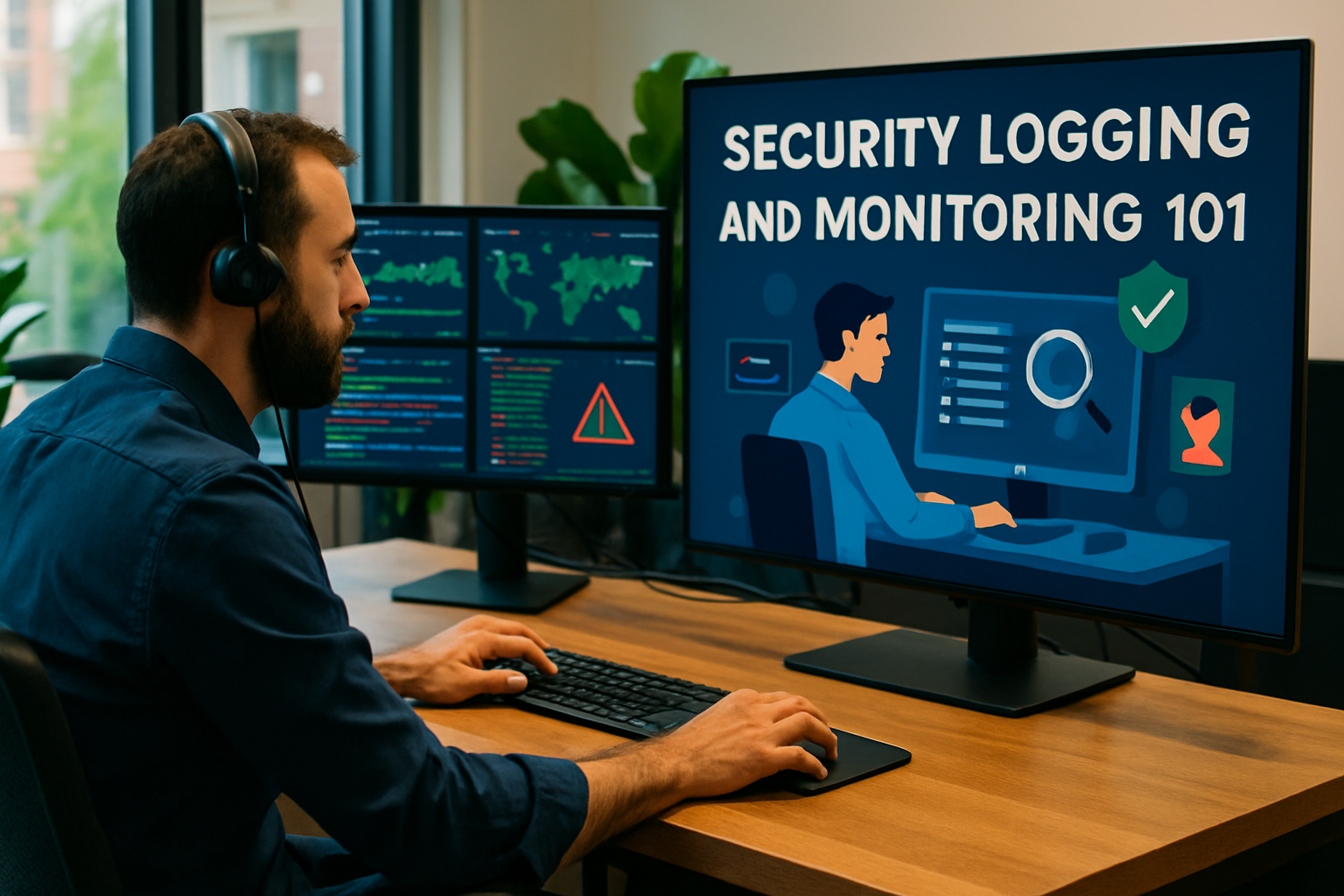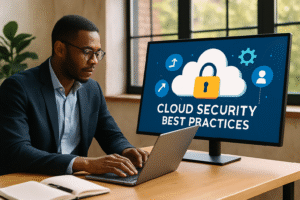
Security logging and monitoring 101
In the ever-evolving landscape of technology, security logging and monitoring serve as the silent sentinels of our digital infrastructure. For organizations of all sizes, from startups to multinational enterprises, the stakes have never been higher. Sensitive data, intellectual property, and the privacy of users are all at risk—not just from external threats, but also from within. Understanding the basics of logging and monitoring is not just a technical necessity; it is a fundamental pillar of organizational resilience and trust.
Why Security Logging Matters
Every interaction with a computer system leaves a trail. This trail—if systematically captured—becomes security logs: records of activities, errors, access attempts, configuration changes, and more. Properly maintained logs provide the raw material for monitoring and analysis, turning data into actionable intelligence.
“Logs are the memory of a system. Without them, you’re blind to both history and the present.”
Security logging is indispensable for:
- Detecting unauthorized access
- Investigating incidents and breaches
- Auditing user and system behavior
- Ensuring compliance with legal and regulatory frameworks
The Anatomy of a Good Log
Not all logs are created equal. For logs to be truly useful, they must be:
- Consistent: Use standardized formats and timestamps.
- Detailed: Record enough information to reconstruct events, but avoid unnecessary clutter.
- Secure: Protect logs from tampering and unauthorized access.
- Accessible: Store logs in a manner that enables timely retrieval and analysis.
For example, a login event log should capture:
- User ID
- Timestamp (preferably in UTC)
- Source IP address
- Device or browser fingerprint
- Result (success or failure)
Real-World Logging Examples
Let’s make this practical. Here are concrete examples of logs you should capture:
- Authentication logs: Record every login attempt—successful or failed.
- Privilege escalation: Monitor whenever a user gains additional rights, such as admin access.
- Configuration changes: Track changes to system or application settings.
- File access: Log when sensitive files or databases are read, modified, or deleted.
- Network activity: Capture unusual outbound or inbound connections.
Tip: For web applications, be sure to log failed login attempts, password resets, and changes to multi-factor authentication settings.
Inclusive Logging: Supporting Neurodivergent and Diverse Teams
In diverse and neurodiverse teams, clarity and accessibility of logs are essential. Use plain language where possible, avoid ambiguous abbreviations, and provide context for each entry. Consider designing log review processes that accommodate different cognitive styles—visual dashboards, plain-text summaries, and automated notifications can all help.
Empathy in security is as vital as technical rigor. Clear, accessible logs empower everyone to participate in safeguarding systems.
Monitoring: The Art of Noticing
Logging is only half the equation. Monitoring transforms raw logs into insights by continuously watching for patterns, anomalies, or indicators of compromise. This is where automation and human intuition meet.
Key Monitoring Strategies
- Real-time alerts: Set up notifications for suspicious activities, like repeated failed logins or large data transfers.
- Dashboards: Visualize trends and anomalies with tools like Kibana, Grafana, or Splunk.
- Automated response: Configure systems to automatically block suspicious IPs or lock accounts after too many failed logins.
- Regular review: Schedule daily or weekly reviews of critical logs, especially for privileged accounts.
For example, you might create a rule that triggers an alert if a user logs in from two countries within an hour—a possible sign of account compromise.
Machine Learning in Monitoring
Modern monitoring increasingly leverages machine learning. By learning what “normal” looks like, algorithms can flag deviations that might indicate a threat. This is especially valuable in large organizations with vast, complex systems.
Actionable tip: Start simple. Even threshold-based alerts (e.g., more than five failed logins in a minute) can stop attacks before they escalate.
Protecting Log Integrity
Logs themselves are valuable targets. Attackers often try to erase or alter logs to cover their tracks. Protecting log integrity is therefore paramount.
- Restrict access: Only authorized personnel should be able to view or modify logs.
- Immutable storage: Use write-once, read-many (WORM) storage where possible.
- Regular backups: Store copies of logs offsite or in the cloud for redundancy.
- Hashing and signing: Apply cryptographic hashes or digital signatures to detect tampering.
Tip: Implement log retention policies that comply with both security needs and privacy regulations. Avoid keeping sensitive logs longer than necessary.
Privacy and Legal Considerations
Security logging must respect privacy. Log only what is necessary. Mask or anonymize personally identifiable information (PII) when possible, especially if logs are shared with third parties or used for monitoring by diverse teams.
Balancing vigilance and privacy is not a zero-sum game. Respectful logging builds trust with users and colleagues alike.
Building a Culture of Security Awareness
Technology alone cannot secure an organization. The human element remains critical. Foster a culture where everyone—developers, analysts, managers, and even non-technical staff—understands the value of security logs and monitoring.
- Provide regular training on interpreting logs and recognizing suspicious activity.
- Encourage reporting of anomalies, even if they seem minor.
- Celebrate successful incident detection and response as team achievements.
Women and neurodivergent professionals, often underrepresented in cybersecurity, bring unique perspectives to log analysis and monitoring. Their insights can reveal blind spots that might otherwise go unnoticed. Empowering all team members to engage with logging and monitoring not only strengthens security but also fosters inclusion and innovation.
Actionable Steps to Get Started
- Inventory your systems and identify what needs to be logged.
- Establish clear logging and monitoring policies—who is responsible for what, and how alerts are handled.
- Choose the right tools for your size and needs, from open-source solutions like ELK Stack to managed cloud services.
- Review and refine your logging setup regularly. Threats evolve, and so should your defenses.
Recommended Tools and Resources
- ELK Stack (Elasticsearch, Logstash, Kibana): Powerful, open-source log management and visualization.
- Splunk: Enterprise-grade log aggregation and analysis platform.
- Graylog: User-friendly, open-source log management tool.
- Wazuh: Security monitoring, intrusion detection, and log analysis in one.
- CIS Controls: Best practices for secure configuration and logging.
Embracing the Future: Security Logging for All
As technology advances, so too do the challenges and opportunities in security logging and monitoring. Artificial intelligence, cloud computing, and increasingly complex digital ecosystems demand ever-more sophisticated approaches. Yet, the core principles remain unchanged: capture what matters, monitor with care, respect privacy, and empower your team.
Whether you’re a seasoned security analyst, a software engineer just starting out, or a neurodivergent learner exploring the field, remember: good logging and monitoring are for everyone. Clear, accessible, and actionable logs are the foundation of safe, resilient systems—and of a more inclusive digital world.
In security, attention to detail is an act of care—for your data, your users, and your colleagues.
Keep learning, keep questioning, and keep building systems that protect and empower us all.


